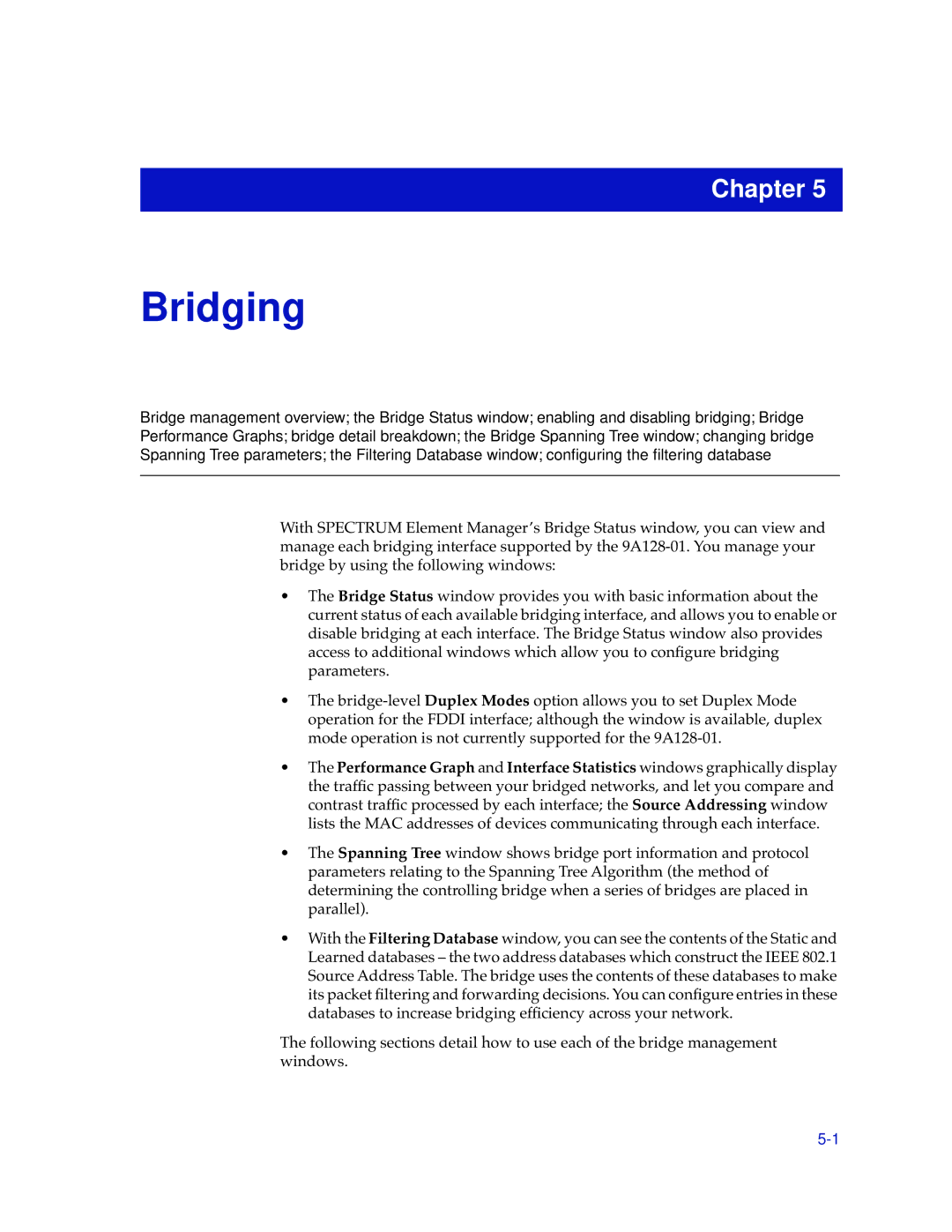
Chapter 5
Bridging
Bridge management overview; the Bridge Status window; enabling and disabling bridging; Bridge Performance Graphs; bridge detail breakdown; the Bridge Spanning Tree window; changing bridge Spanning Tree parameters; the Filtering Database window; configuring the filtering database
With SPECTRUM Element Manager’s Bridge Status window, you can view and manage each bridging interface supported by the
•The Bridge Status window provides you with basic information about the current status of each available bridging interface, and allows you to enable or disable bridging at each interface. The Bridge Status window also provides access to additional windows which allow you to configure bridging parameters.
•The
•The Performance Graph and Interface Statistics windows graphically display the traffic passing between your bridged networks, and let you compare and contrast traffic processed by each interface; the Source Addressing window lists the MAC addresses of devices communicating through each interface.
•The Spanning Tree window shows bridge port information and protocol parameters relating to the Spanning Tree Algorithm (the method of determining the controlling bridge when a series of bridges are placed in parallel).
•With the Filtering Database window, you can see the contents of the Static and Learned databases – the two address databases which construct the IEEE 802.1 Source Address Table. The bridge uses the contents of these databases to make its packet filtering and forwarding decisions. You can configure entries in these databases to increase bridging efficiency across your network.
The following sections detail how to use each of the bridge management windows.
